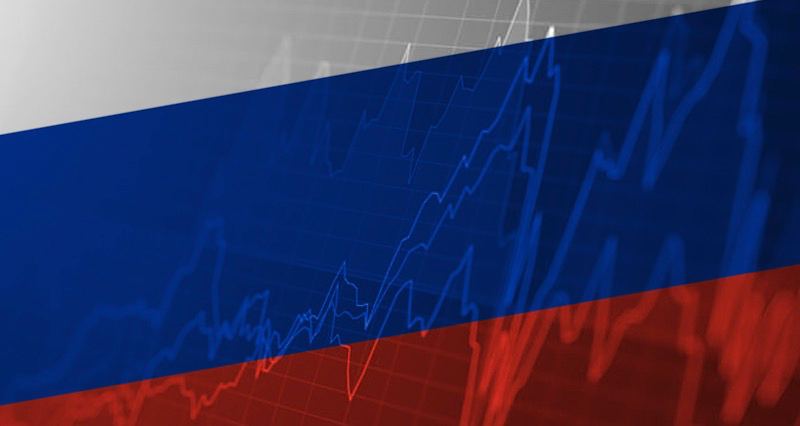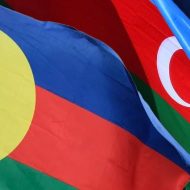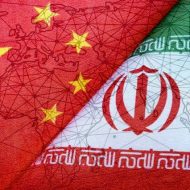We bring to your attention the article by Russian economist Sergey Glazyev, in which he examines the Russian economy’s struggle against Western sanctions.
Glazyev’s article was first published in Russian in the magazine “Zavtra”. The title and subtitles in the English translation were put by UWI.
Russia has restored dignity to its military, military-industrial complex and foreign policy. This hat-trick has turned our country into an international grandmaster at the “Grand Chessboard”, giving win-win simultaneous sessions to the collective West. Russia is taking its own way, despite the collapse of the economy in the 90s, sluggish economic growth in the following years, permanent financial crises, and now in the conditions of severe information and sanctions aggression of the West.
The pledge of resilience and durability of the Russian state is based on deep culture, natural talent and faith of the people in their happy future, as well as, as it has happened many times in the history of our fatherland – visible to the whole world the importance of the role of the individual in history, changing not only its Russian course, but also significantly affecting the formation of a benevolent and fair world order.
Our country will take its own, but the geopolitical breakthrough is being realized not thanks to, but in spite of the current system of economic management, based on the totalitarian liberal-market paradigm of its financial block.
The failure of this paradigm is conditioned by the very fact that the Russian Federation, possessing a third of the planet’s natural wealth, high cultural and educational potential of its population, has not been able to go beyond a three-percent contribution to the world economy for all the years of its existence. Doesn’t it look like a geo-economic absurdity that the Russian GDP is six times lower than the American one, while we have 6 times more natural resources? And the IQ of Russians is not lower than that of Americans, if we do not compare financiers in the monetary authorities of our countries. I am sure that if the economy of the 90s had been based on a different paradigm of the country’s economic structure (discussed below), by today’s economic growth could be no lower than that of China. That is, we would have produced an order of magnitude more products and had incomes ten times higher than at present.
Russia and Liberal-market totalitarianism
Liberal-market totalitarianism was created and nurtured by the West for the sole purpose of making us, like the Third World countries that followed the Washington Consensus, its political vassal and raw materials appendage. For this purpose, Washington founded a dynasty of its adherents here – first for the collapse of the USSR, and then Russia. Our country was used as a drive belt for the prosperity of the Western world, in particular, the Western European countries. But as soon as the belt broke, these countries had problems with economic growth and quality of life. By abandoning its partnership with Russia, Europe was also hit below the belt by its main military and political protector, the United States, which planned to compromise its allied principles by making the Western Europeans the source of compensation for the costs of the global hybrid warfare unleashed by them, as was the case in all world wars.
The immutability of the established way of life in the Russian economy has long puzzled thinking people. Isn’t the country’s ruin in the 90s and constant financial “tsunamis” in the economy a challenge to clear the mind? Aren’t the actions of the Central Bank of the Russian Federation, which the Russian business community calls a “ban on investment,” another reason to ask: isn’t it time to bring dignity back to our Fatherland – following the example of the army, the military-industrial complex, and foreign policy – to the Russian economy? The answer is obvious, as this time has stretched for more than three decades.
Soviet Union experience in economy
The current “à la NEP” dogma and sanctions blockade of our country is a déjà vu of the initial era of the “Great Turning Point” in the USSR, which marked the forced development of industry in the late 20s and 30s of the last century. The NEP was unable to solve the problem of accelerated industrialization of the country in a hostile environment, and thus the survival of the USSR. It was then that the precedent of solving this complex institutional problem was born, which is worthy of close attention for solving similar problems today. Thanks to this decision, in just 10 years, at the expense of internal resources and without the infusion of foreign capital, the country managed not only to get up from its knees, to rise to its full height, but also to turn into a great power.
After a complete economic decline as a result of the civil war, class struggle and total destruction of all reproduction circuits, the USSR in a decade raised machine-tool, chemical, aviation, machine-building and other sectors of the economy, creating by 1933 1500 large enterprises, and by 1937 – another 4500, increased during these years the GDP of the country by 400%. Not at a rate of 2 or 3 percent a year, as it is now, but at an average rate of 25 percent. For the sake of truth, it should be said that this impressive growth of production followed a 6-fold drop in its level after two wars and revolutions, followed by a short era of war communism – a kind of shock therapy of the time. We are already a quarter of a century away from our shock therapy of the first half of the 90s, but the mistakes made at that time have not been corrected: the level of investment is still twice lower than it was in the RSFSR 30 years ago, and we are still overturning the failure of the 90s in terms of consumption of basic foodstuffs and quality of life.
And back then the times separating the USSR from the rest of the world were more difficult than now. However, the country has risen rapidly. From the point of view of “common” liberal-market sense, this is simply impossible. However, the economic triumph was accomplished. The industrial and agrarian rise of the country ensured victory in the Great Patriotic War. This page in economic history is entitled as “Victory Economy”.
We are no longer faced with the super task of an industrial breakthrough at any cost. However, the most significant institutional decisions of that time should be used in the system of state management of economic development in modern market conditions.
In accordance with the planned goal-setting, the task of creating productive forces based on heavy and processing industry, technologically ensuring production redistribution in all spheres of the economy – from the extraction of natural resources to the production of a variety of finished goods – was put forward to the forefront. This large-scale task had to be solved in the shortest possible time, in conditions of hostile environment and lack of savings and investment. And it was done: the country became self-sufficient, poverty was eliminated, a high level of health care and education was ensured, a powerful military-industrial complex was created.
Rapid growth was largely due to the transformation of the financial system to meet the needs of accelerated industrialization. A unique two-circuit system of monetary circulation was created, which ensured expanded reproduction of the economy and improved the quality of life of the population. Its essence was that the money supply was divided into cashless and cash parts. The non-cash “mass”, which exceeded its cash part ten times, represented monetary surrogates in the form of commodity-accompanying documents, with the help of which the exchange of activities and cost accounting were mediated, the process of distribution of material and technical resources in the national economy took place. These investment-supporting surrogates were abundantly “irrigated” with key points of economic growth. Cash money paid in the form of salaries, bonuses, pensions, subsidies and fees was issued by the USSR State Bank in accordance with the volume of commodity mass of products and services consumed by the population. Blocking inflationary processes Realizability was ensured by the fact that the circulation of money surrogates and cash money in the national economy was isolated from each other.
In fact, in that era the mechanism of targeted lending of the country’s outstripping socio-economic recovery was realized, in which the economy developed significantly more intensively than the solvent demand and savings of the population “allowed” it. This was ensured, on the one hand, by the emergence of new enterprises, growth of jobs, labor income and, accordingly, consumer demand. And on the other hand, with the development of light and food industry, public utilities and transportation, services, the commodity supply increased by demand. These circumstances, along with the outstripping growth of the economy, contributed to the accelerated solution of social problems, improving the standard of living of the people.
In those times, few people knew the words “inflation”, “discount rate”, “derivatives”, etc. And the modest role of the State Bank of the USSR in the system of financial management of the country was much more effective compared to the current high status of the Central Bank of Russia, which hinders economic growth. In the hierarchy of the country’s economic system of those years, the USSR State Bank acted under the general direction of the People’s Commissariat of Finance and strictly followed the country’s development strategy. The work of the State Bank was determined by the tasks of accelerated industrialization: it functioned as an all-union “accounting office” – the settlement and cash center of the state monetary system. If the Gosbank provided loans to industry and agriculture, it was non-commercial – at zero interest. Therefore, the development of the country by definition could not be hindered by the Gosbank due to lack of funds and other allegedly objective reasons, as it happens today at the will of the Bank of Russia.
People’s Commissariats, which pursued the policy of industrialization of the country, in fact, were institutions of advanced economic development. They were large headquarters of the key industrial clusters of the USSR, systematically using project methods of development of national economic complexes. Today, on the contrary, not ministries, but commercial banks have become headquarters – not for the development of the economy, but for the withdrawal of super-profits from its real sector with the subsequent pumping of unearned super-profits received through inflated interest rates and collateral raiding into the pockets of their managers and abroad.
Summarizing this brief excursion into the history of the industrial breakthrough of the USSR, we can assert that the institutions of state management of the economy plus the financial policy of those years were the locomotive of the advanced growth of the economy under the severe sanctions blockade. This economic system survived the Patriotic War, demonstrating its literally and figuratively “steely” character.
Direction of the Russian economy
Today, Russia is already standing at the “great turning point”. The current conditions of the sanctions blockade of Russia have created a real opportunity to transfer its economy, figuratively speaking, from the liberal-market “nag” to the fast train of advanced reproduction of the country’s productive forces. In this case, the “invisible hand” of the market, of course, should not be amputated. It will find more work in the niches of small and medium-sized business development, stimulation of small and medium-sized businesses, as it happens in all developed economies.
Fortunately, thanks to the President and the Government of Russia, federal development institutions, a system of strategic forecasting and growth planning, and the implementation of national projects in three main areas – Human Capital, Comfortable Living Environment, and Economic Growth – have become operational. This is an important milestone in the rise of our country. However, economic growth is the weak link in this triad. The progress could have been more impressive if the liberal-market dogma imposed more than 30 years ago by the hostile West had not been laid at the foundation of the state financial policy.
Replacing the liberal-market template with the paradigm of advanced economic growth will allow Russia to repeat the grandiose success of the past years. A new page of Russian history will open – a new chronicle of the “Victory Economy”. For this purpose, the program “Social Justice and Economic Growth” proposed at the Russian Economic Forum and the World Russian People’s Cathedral, which is based on a science-based strategy of advanced economic development on the basis of a new technological mode, must be implemented.
The question facing Europe
And just in time, because the Americans, in the heat of intercontinental competition, fighting for hegemony in the markets of foreign continents, have gone to all sorts of lengths – ruining even their closest partners and allies, cutting them off from resource-intensive countries and involving them in an arms race. The sanctions blockade of Russia, by the Western strategists’ misguided thinking, in fact turns into a blockade of their own development, a decrease in the “happiness index” of the population, and a growing social tension. The West is bluffing, raising the stakes in the geopolitical game, underestimating the significant advantage of Russia, which can deprive their economy of a significant part of the natural wealth of the planet.
I would like to believe that Europeans, faced with the grave consequences of the overseas will imposed on them, will finally come to the right geopolitical solution, which is prophesied by the great European politicians – the creation of the United States of Europe and the Greater Eurasian Partnership: from Lisbon to Vladivostok. European countries will have the only chance to maintain a decent quality of life for their citizens – to stick to Russia and together with Russia to strengthen the pan-European economy and peace on the continent.
Today there are all the prerequisites for the realization of this geopolitical scenario. The only “small thing” that remains is the rise of Russia’s economy through the realization of the paradigm of the country’s advanced development on the basis of a new technological mode and institutions of the new world economic mode using modern management tools.









Leave a Reply